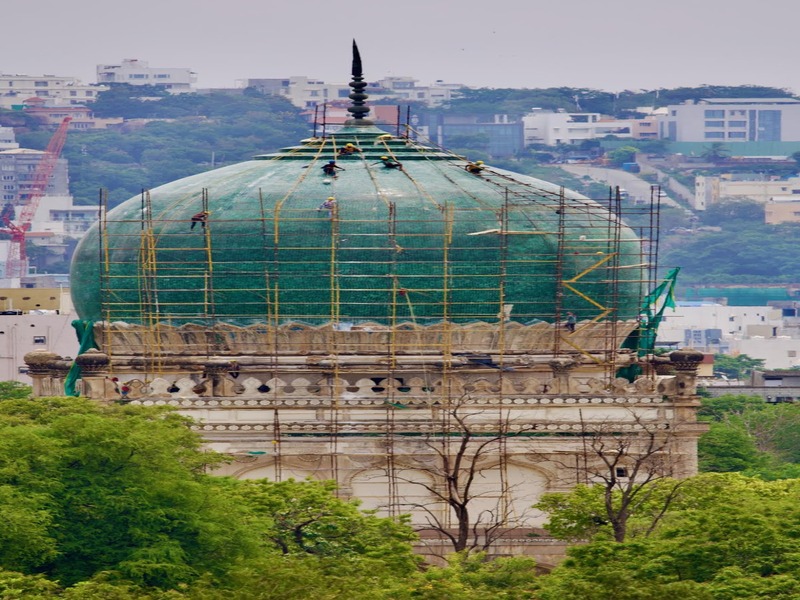The Qutub Shahi Tombs in Hyderabad are experiencing a renaissance with the addition of a stunning green glazed dome. This historic enhancement not only preserves the architectural grandeur of the tombs but also highlights their cultural significance, reflecting the rich legacy of the Qutub Shahi dynasty in a modern light.
The tomb of the King who died last is the finest of all, and its dome is varnished over with green,” wrote the French traveller Jean de Thevenot in 1667.
The skyline of Hyderabad changed yet again on Friday as the Telangana Department of Archaeology and Museums (DAM) unveiled the tilework of the Mohammmed Qutb Shah’s tomb at the foothills of the Golconda Fort.
“This work has been going on for a few months. We finished the dome portion and will continue with the petals on the neck of the dome, cornices and minarets. This restoration gives us an understanding of the Qutb Shahi art and architectural heritage and we hope it will add to the aura of the heritage park,” said Ratish Nanda, CEO of Aga Khan Trust for Culture which is carrying out the work in collaboration with the DAM.
Mohammed Qutb Shah was the nephew and son-in-law of the founder of Hyderabad, Mohammed Quli Qutb Shah. During his brief rule between 1611 and 1625, the work on Mecca Masjid near Charminar was started but remained incomplete. All the domes and funerary masjids inside the complex were covered up in cement mortar in the 20th century over various conservation initiatives.
It was in 2021 that the AKTC staff came across patterns of glazed tiles on the tomb of Mohammed Qutb Shah that set them on the path of restoration. The uncovered tiles have blue, green, white, yellow and red that usually form the haft-rang in medieval architecture.
“There was evidence of tilework on the Ibrahim Qutb Shah’s tomb. There are historical references to the tiles on the mausoleum of Mohammed Quli Qutb Shah. But it was Sultan Mohammed’s tomb where we found sufficient evidence and patterns so that we could restore it.
Much of the tilework was buried under layers of the 20th century plaster. We are going to go ahead with the restoration progressively to the lower levels. Some of the tile relics have been left as they were, which is the conservation practice nowadays,” informed Mr. Nanda.
On Friday, as monsoon winds blew across the open park, workers cut through the green protective mesh that had covered the tile work. The mausoleum rises to a height of 43 metres or about 14 stories and the tilework covers an area of about 9,000 square feet.
“We analysed the composition of the tiles that were found in the debris and did a chemical analysis and the same formula was used to create these 110 mm by 110 mm tiles. There are about 70,000 glazed green tiles that cover the dome,” informed an architect working on the site.
The conservation effort on Sultan Mohammed’s tomb is part of the CSR initiative of the IndiGo Airlines through Interglobe Foundation with Aga Khan Trust for Culture and the Telangana Department of Archaeology and Museums.
“The tomb of the King who died last is the finest of all, and its dome is varnished over with green,” wrote the French traveller Jean de Thevenot in 1667.
In June 2024, visitors and tourists can again see the mausoleum as was seen by Thevenot. #hydkhabar

